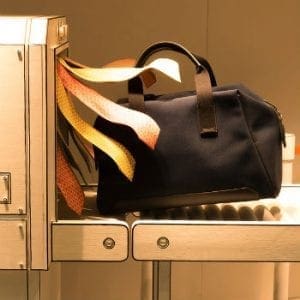 Businesses are frequently valued using one or more established approaches across industries and sectors. Their replacement cost, income generation ability and/or comparable sales of similar businesses usually form the basis of such valuations. However, in most cases, a business value using the approaches mentioned herein is largely determined for tangible assets, as they have been regarded as the main source of value creation.
Businesses are frequently valued using one or more established approaches across industries and sectors. Their replacement cost, income generation ability and/or comparable sales of similar businesses usually form the basis of such valuations. However, in most cases, a business value using the approaches mentioned herein is largely determined for tangible assets, as they have been regarded as the main source of value creation.
In recent times, several companies have increasingly, and justifiably so, embraced the idea that a business’s value is not made up of its tangible assets alone. The importance of not just the brand, but also patents and trademarks, technology and intellectual property as well as human capital is now being ascribed value, which in many cases, has caused a measurable shift in the market value of companies when compared to their book value. A rather simple way of defining brand value is that it is the net present value of the estimated future cash flows attributable either primarily or solely to the brand. Consequently, brand valuation is the process used to calculate the value of a brand.
Brand valuation methodologies
Unlike traditional methods utilised for the valuation of assets or companies, the approaches to perform a brand valuation are several and varied. The following narrative provides a broad overview on some of the prominent brand valuation methodologies employed by various industries and valuers.
Accumulated or historical cost method
The brand is valued using the sum of individual costs of the brand’s assets. It is the accumulation of the costs that have been incurred to build the brand since its inception. This does not include hard-assets such as real estate, plant, machinery, land, furniture or fixtures; just assets that are truly related to the brand itself. Items included when evaluating costs would be historical advertising spends, PR and promotion expenditures, the cost of campaign creation, licensing and registration costs, brand website costs, online platforms, CRS systems, and anything else that is owned by the “brand” itself. Using the cost base valuation would require the valuer to evaluate the cost of creating the brand as it exists today and restating actual expenditures in current cost terms. The challenge with this method is collating all these spends since inception and such information may not be always be available.
Brand sale comparison method
This method simply values the brand by looking at recent transactions of similar brands in the same sector or industry and utilises comparable multiples to arrive at the outcome. In other words, this method takes the premium that may have been paid for similar brands and applies this to brands that the company owns. The merit of this method is that it aims to view an independent or third-party perspective towards a valuation and subsequent trade of a similarly branded product or service. However, the chances of finding similar brand valuations that traded in similar circumstances with similar buyer-seller motivations are rare.
Relief from royalty method
There are various income-based brand valuation methods. The most frequently used one is the ‘relief from royalty’ method. The premise here is that if a company did not own the brand name, it would have to pay a royalty fee for the right to license and use the trademark. By actually owning the brand, the company is relieved from having to pay such a royalty fee. It uses discounted cash flow analysis (DCF) to capitalise future branded cash flows and that number would be attributed as brand value. In other words, the Net Present Value (NPV) of all forecasted royalties represents the value of the brand to the business.
Price premium method
This method aims to estimate the value of a brand by comparing the price premium it commands over unbranded, weakly branded or generic products or services. The premise is that a branded product will likely sell for a premium over a generic product or service of similar quality and service standards, leading to higher revenue or sales, eventually allowing for a higher company value. The Price Premium Method calculates the brand value by multiplying the price differential of the branded product with respect to a generic product by the total volume of branded sales. The larger the price premium that a company can charge, the greater is the value of the brand name.
Conclusion
There is more art than science in the methodologies employed and no one valuation method is the most relevant. Getting the value of a hotel, restaurant, club, bar or cafe’s brand assessed by professional hospitality valuation firms is becoming increasingly prevalent.
For more information, please contact Achin Khanna on achin@hotelivate.com













